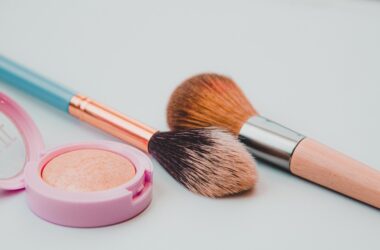Table of Contents
Uncovering Your Skin Type: The First Step to a Smoother, Healthier Complexion
All too often, the quest for a radiant, healthy glow can feel like a never-ending journey. With countless products and promises on the market, it’s no wonder so many of us are left feeling overwhelmed and unsure of where to begin. But what if we told you that the key to achieving your dreamed-of complexion lies in understanding your unique skin type? By determining your skin type, you’ll be one step closer to finding the perfect products, routines, and treatments tailored to your individual needs. In this article, we’ll delve into the world of skin typing and explore the importance of identifying your skin type for a smoother, healthier complexion.
The Four Main Skin Types: Understanding the Basics
The journey to a better understanding of your skin type begins with understanding the four main skin types: Normal, Dry, Oily, and Combination. Each type is characterized by distinct features, such as texture, moisture levels, and appearance. By recognizing which category you fall under, you’ll be better equipped to pinpoint the products, techniques, and treatments that will bring out the best in your skin.
Normal skin is often characterized as balanced, with a normal pH level and a subtle, even tone. It’s like a blank canvas, ready to be enhanced with a healthy glow.
Dry skin is often characterized by a lack of moisture, leading to tightness, flakiness, and an overall parched appearance. Dry skin requires gentle, nourishing products to combat its dry spells.
Oily skin is marked by an overproduction of sebum, resulting in a shiny, greasy appearance. Oily skin often requires products that target oil control and purging.
Combination skin is a mix of both, with areas of dryness and areas of oiliness. Combination skin can be challenging, but with the right products and techniques, it can be managed.
The 7 Sub-Types: Uncovering the Details
However, the four main skin types are not a one-size-fits-all solution. Each type can have sub-types, unique characteristics that set them apart from one another. The seven sub-types, often referred to as the Acne Prone, Aging, Cushing’s, Eczema, Psoriasis, Rosacea, and Sensitive, provide a more detailed understanding of your skin’s needs.
Acne-prone skin is characterized by frequent breakouts, blackheads, and whiteheads. It’s essential to focus on products that target acne, such as salicylic acid and benzoyl peroxide.
Aging skin is marked by fine lines, wrinkles, and a loss of elasticity. Anti-aging products with antioxidants, peptides, and retinol can help combat the signs of aging.
Cushing’s skin is caused by hormonal imbalances, resulting in thin, translucent skin with poor elasticity. This type often requires gentle, nourishing products that promote collagen production.
Eczema-prone skin is marked by inflammation, redness, and itching. It’s crucial to use gentle products that soothe and calm the skin, such as fragrance-free and hypoallergenic products.
Psoriasis-prone skin is characterized by scaly patches and redness. Products that target inflammation, such as cortisone creams, can help alleviate these symptoms.
Rosacea-prone skin is marked by redness, flushing, and acne. Products that reduce inflammation, such as tea tree oil and aloe vera, can help calm the skin.
Sensitive skin is often characterized by extreme reactivity, such as redness, itching, and stinging. Sensitive skin requires gentle, fragrance-free products that are hypoallergenic.
Putting it All Together: How to Determine Your Skin Type and Sub-Type
So, how can you determine your skin type and sub-type? Start by examining your skin and identifying its characteristics. Look at your face and body, taking note of its texture, moisture levels, and appearance. You can also take the skin type quiz online, which usually asks questions about your skin’s tolerance, sensitivity, and concerns. Don’t be surprised if you land in the grey area between two types – you’re not alone!
By understanding your skin type and sub-type, you’ll be better equipped to:
Create a personalized skincare routine that caters to your unique needs.
Select products that are designed for your specific skin concerns.
Develop a treatment plan that targets your skin’s specific issues.
Enhance your overall health and appearance, leading to a smoother, healthier complexion.
Conclusion
In conclusion, determining your skin type and sub-type is the first step towards unlocking a smoother, healthier complexion. By understanding your unique skin characteristics, you’ll be able to tailor your approach to suit your individual needs. Remember, there’s no one-size-fits-all solution, but with the right knowledge and products, you can unlock the radiant, healthy glow you’ve always dreamed of. Happy discovery, and happy skincare journeying!




